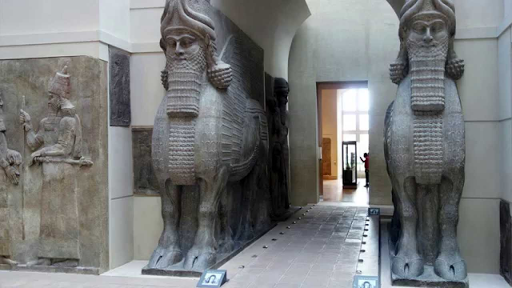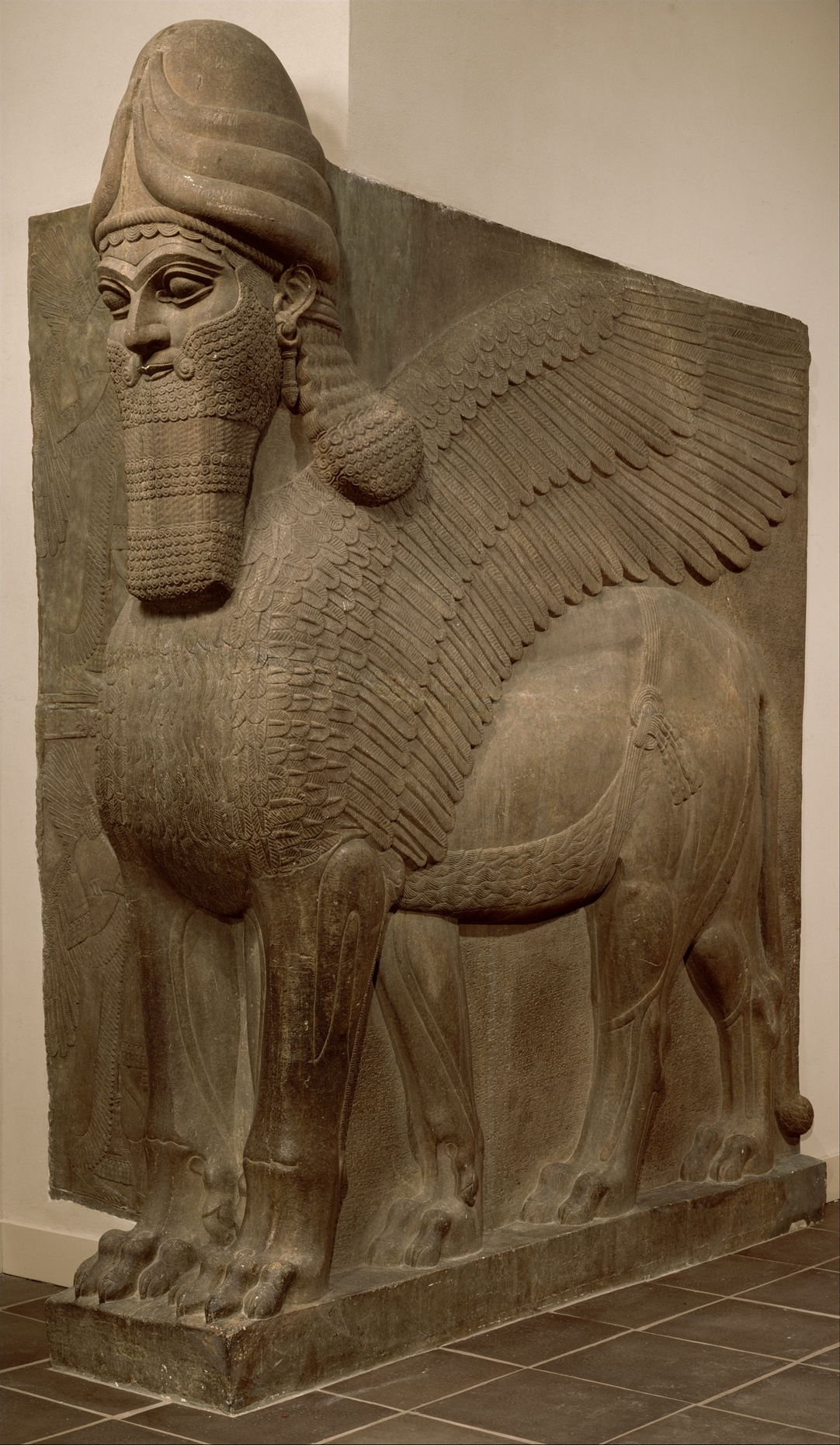In some cases the lamassu statues were accompanied by. These massive sculptures served as symbolic guards of Assyrian kings domain being placed at the entrance to both the city and palace gateways See Collins 2008 72.

Lamassu From The Citadel Of Sargon Ii Video Khan Academy
From what we can tell it seems that these sculptures were believed to protect the palace and king from evil supernatural forces as well.

. The correct answer that would best complete the given statement above would be option b. These sculptures were excavated by P-E. This was possibly the first time when Europeans watched the mythical monsters.
What were the most common themes in Assyrian art. Diocletian and constantine paved the way for foreign invasion by dividing the empire creating administrative. The gate and its lamassu were first excavated by Sir Austen Henry Layard in 1849 but then re-buried.
Originally unearthed in Rome and displayed in the Borghese Gallery it was sold to the occupying French and now sits in the Louvre. The Ziggurat at Ur was a fortress funerary monument palace temple platform Where were the Lamassu sculptures originally displayed. You can see them at Gate of All Nations at Persepolis in Iran the British Museum in London the Louvre in Paris the National Museum of Iraq in Baghdad the Metropolitan Museum of Art in New York and the University of Chicago Oriental Institute.
The Lamassu seen from the side from the palace Sargon II r. An American professor named Michael Rakowitz was commissioned to recreate this Lamassu sculpture and it is now displayed in Trafalgar Square in London. This replica was made with 10000 Iraqi date syrup cans and serves as a symbol of bright colors in the dark gray area of London.
It documents the story of human culture from its beginnings to the present. Where were the lamassu sculptures originally displayed. Assyrian sculpture typically placed prominent pairs of lamassu at entrances in palaces facing the street and also internal courtyards.
What ethnic group is credited with the first system of writing known to man. Which work has a king approaching the god. The first change was the capital was moved to Dur Sharrukin present day Khorsabad and second the Lamassu was presented on a bulls body compared to a lions and seems to be slightly smiling.
Strengthening these bonds further were the so-called Panhellenic sanctuaries and festivals that embraced all Greeks and encouraged interaction competition and exchange for example the Olympics which were held at the Panhellenic. The Ziggurat at Ur was a fortress funerary monument palace temple platform Where were the Lamassu sculptures originally displayed. They were represented as double-aspect figures on corners in high relief.
The winged beasts from Nimrud in Iraq the ancient city of Kalhu also became quite famous. Originally unearthed in Rome and displayed in the Borghese Gallery it was sold to the occupying French and now sits in the Louvre. The Ziggurat at Ur was a fortress funerary monument palace temple platform Where were the Lamassu sculptures originally displayed.
721-705 BCE Part of a collection at the Louvre in Paris France. The Ziggurat at Ur was a fortress funerary monument palace temple platform Where were the Lamassu sculptures originally displayed. Click to see full answer.
Currently representations of Lamassu are parts of collections at the British Museum in London Metropolitan Museum of Art in New York and The Oriental Institute in Chicago. Colossal Lamassu Sculpture From The Palace Of Sargon Ii At Khorsabad Sargon Ii Google Arts Culture Human Headed Winged Bull Lamassu Assyrian Neo Assyrian The Metropolitan Museum Of Art Share this post. The British Museum was the first public national museum in the world.
Sargons palace gudeas lagash ashurbanipals palace ziggurat at ur. Assyrian sculpture typically placed prominent pairs of lamassu at entrances in palaces facing the street and also internal courtyards. The first distinct lamassu motif appeared in Assyria during the reign of Tiglath-Pileser II as a symbol of power.
The Lamassu sculptures were recovered from where. Originally unearthed in Rome and displayed in the Borghese Gallery it was sold to the occupying French and now sits in the Louvre. In the Assyrian mythology there were human headed winged bullslions that were protective genies.
Where were the Lamassu sculptures originally displayed. Backstory The lamassu in museums today including the Louvre shown in our video as well the British Museum The Metropolitan Museum of Art and National Museum of Iraq in Baghdad and others came from various ancient Assyrian sites located in modern-day Iraq. Furthermore where were the lamassu sculptures originally displayed.
Where were the lamassu sculptures originally displayed Written By viveiros Friday March 11 2022 Add Comment Edit Terracotta artwork was the standard for decorating the superstructure of Etruscan temples and the coroplastic terracotta workshops producing these sculptures often displayed a high level of technical achievement. The first change was the capital was moved to Dur Sharrukin present day Khorsabad and second the Lamassu was presented on a bulls body compared to a lions and seems to be slightly smiling. The Lamassu sculptures were recovered from where.
What ethnic group is credited with the first system of writing known to man. Appreciating and understanding ancient Egyptian art.

Lamassus At The Louvre Thatmuse

25 Lamassu From The Citadel Of Sargon Ii Dur Sharrukin Modern Iraq Ap Art History

Lamassu Backstory Article Assyrian Khan Academy

Lamassu From The Citadel Of Sargon Ii Video Khan Academy
Colossal Lamassu Sculpture From The Palace Of Sargon Ii At Khorsabad Sargon Ii Google Arts Culture
Human Headed Winged Bull Lamassu Assyrian Neo Assyrian The Metropolitan Museum Of Art

Human Headed Winged Lion Lamassu Assyrian Neo Assyrian The Metropolitan Museum Of Art

16 Lamassu Ideas Mesopotamia Ancient Near East Ancient Mesopotamia
0 comments
Post a Comment